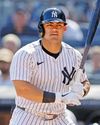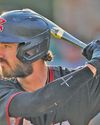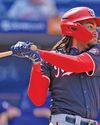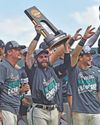
With the March 27 ratification of Major League Baseball and the MLB Players Association’s deal, the 2020 draft was saved.
Saved in the sense that it will still take place in some capacity, which is certainly better for baseball at all levels than no draft at all—which some owners might have preferred in order to save money in the wake of the coronavirus pandemic that has disrupted revenues from the 2020 season.
But many in the industry are already discussing the ramifications of a shortened draft with severely limited signing bonus restrictions. First and foremost, incoming draftees are the most negatively affected.
“Once again, here we go, the next generation of MLB stars who have had their entry path sacrificed without a seat at the table,” one agent said. “It falls in line with a decades-long tradition of owners putting a target on the unrepresented backs of amateurs and minor leaguers.
“It’s potentially a stain on future collaboration of both parties.” MLB gained the ability to shorten the draft to as few as five rounds in the agreement and, ultimately, that’s exactly what it did. Many team owners and scouting directors pushed for at least 10 rounds, but MLB ultimately chose the cost-containment offered by a five-round draft during a time when the industry is hemorrhaging money.
Fewer rounds means less money spent on incoming talent, obviously, but the bulk of signing bonus money is still spent at the top of the draft.
Not counting undrafted free agents, teams spent $316,560,984 in signing bonuses in the 2019 draft. Of that sum, $237,345,700 came from signing bonuses to players drafted in the top five rounds—or just under 75 percent of the total.
هذه القصة مأخوذة من طبعة May/June 2020 من Baseball America.
ابدأ النسخة التجريبية المجانية من Magzter GOLD لمدة 7 أيام للوصول إلى آلاف القصص المتميزة المنسقة وأكثر من 9,000 مجلة وصحيفة.
بالفعل مشترك ? تسجيل الدخول
هذه القصة مأخوذة من طبعة May/June 2020 من Baseball America.
ابدأ النسخة التجريبية المجانية من Magzter GOLD لمدة 7 أيام للوصول إلى آلاف القصص المتميزة المنسقة وأكثر من 9,000 مجلة وصحيفة.
بالفعل مشترك? تسجيل الدخول

THE SERVICE TIME CONUNDRUM
MLB’s byzantine service time rules cloud rookie status and now PPI eligibility

LUIS TIANT WAS MLB'S MOST SUCCESSFUL CUBAN PITCHER
On a scouting trip to Cuba in 1957, Bobby Avila discovered 16-year-old righthander Luis Tiant on the island's Juvenile League all-star team.

ORGANIZATION REPORT
Outfielder Heston Kjerstad's career has been unique, to say the least.

TOP 10 NL EAST
From the moment Thomas White stepped on a high school mound, he was viewed as the top lefthander available in the 2023 draft.

PREPARATION PAYS OFF
lowa politician J.D. Scholten makes a surprising return to pro ball at age 44

MAKING THE GRADE
Assessing the future value of graduated National League prospects

TOP 10 NL WEST
Even in high school, Bryce Eldridge could hit the ball a mile. The 6-foot-7 righthander could also touch 96 mph off the mound.

Wood Has Towering Upside- Nationals rookie James Wood also stands 6-foot-7 and also has game-changing power.
Aaron Judge and Oneil Cruz are 6-foot7 sluggers who stand out for their power in this year’s MLB Best Tools voting. Wood spent half of this season with Triple-A Rochester before making his MLB debut on July 1. While he was in the International League, he captured managers’ attention. Wood unanimously won Best Power Prospect and also claimed Most Exciting Player in a survey of league skippers. Wood hit .353/.463/.595 with 10 home runs in 52 games for Rochester. His .242 isolated slugging was the best for a player 21 or younger at Triple-A this season.

ROAD BLOCK?
Scholarship expansion puts mid-majors at a major disadvantage on the road to Omaha

ROYALS REVIVAL
A revamped and rejuvenated farm system has Kansas City ready to rebound